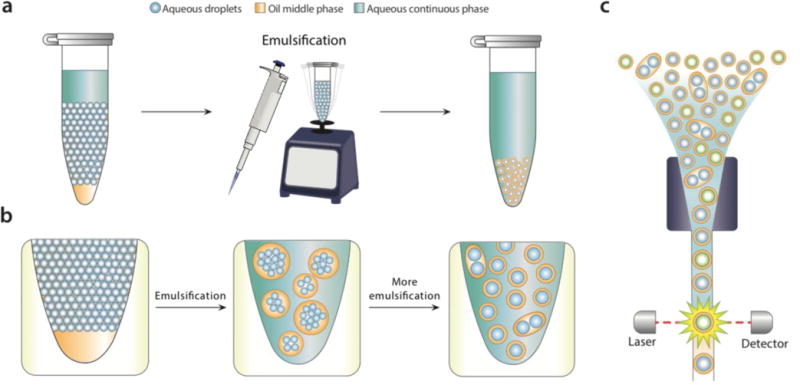Fig 1.

Bulk dispersal of microfluidic droplets into aqueous carrier with pipetting or vortexing. Aqueous carrier is added above a microfluidic emulsion, and the mixture sheared by pipetting or vortexing (a). During shear, large droplet-in-oil-in-aqueous double emulsions with many cores are generated (b, middle) that are sequentially broken into smaller droplets with fewer cores (b, right). Because the microfluidic droplets have a Laplace pressure, they resist shearing, leading to mostly single-core double emulsion droplets. The droplets can be analyzed and sorted with commercial flow cytometry instruments.
